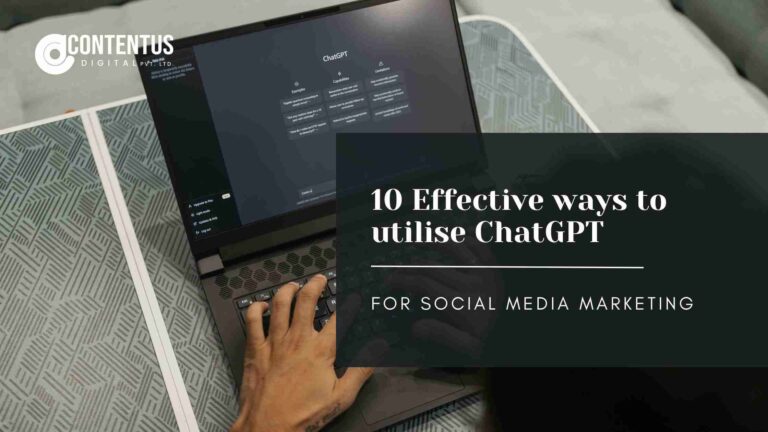The Significance of BOFU Keywords for Content Marketing
Table of Content
1 | Introduction |
2 | What are the Bottom of the Funnel Keywords? |
3 | Importance of Bottom of the Funnel Keywords |
4 | How to Find the Bottom of the Funnel Keywords? |
5 | Creating BOFU content that converts |
6 | How to Optimize for the Bottom of the Funnel Keywords? |
7 | Tips to Boost Your Bottom of Funnel Conversions |
8 | Conclusion |
9 | FAQs |
Want to increase your conversion rate? But don’t know where to start? Bottom of the funnel Keywords will be your saviour. These are the keywords which are directly connected to purchasing decisions. Simply, they navigate the users towards a confirmed purchase. The BOFU content, the powerful form of promotional writing, has the power to convince the audience to purchase products or services from your brand. Thus, BOFU keywords increase your conversion rates and improve sales. Ultimately, they help you to gain better ROI.
So, in this article, you will learn what the bottom of the funnel keywords are and how to implement them strategically in your content.
What are the Bottom of the Funnel Keywords?
Bottom of the funnel keywords are those search queries that users search when they are interested in purchasing. That indicates the keywords have high search intent and are useful to make buying decisions. As a result, they deliver the highest conversion rates. These factors make them the most valuable keywords in SEO.
Here are some examples of the bottom of the funnel keywords –
[Product category] + “software”, “tools”, “platform”, “solution”
e.g. “Yoast SEO”, “project management tools”
[Product category] + “for [industry/role/business type]”
e.g. “content writing services”, “mobile repairing services”
[Your brand] vs [Competitor]
e.g. “Amazon vs Alibaba”, “Dell vs HP”
[Competitor] + “alternatives” or “competitors”
e.g. “Grammarly alternatives”, “ChatGPT alternatives”
Importance of Bottom of the Funnel Keywords
There is multiple evidence that BOFU keywords convert higher than the top or middle of the funnel keywords (TOFU and BOFU). Here are some of the examples –
An agency conducted research among dozens of clients and found that the bottom of the funnel keywords converted leads 25x than the top of the funnel keywords (4.78% vs 0.19%)
Another research showed that 20 BOFU content generated 3x more conversions than 40 TOFU content. (1348 vs 397 conversions)
How to Find the Bottom of the Funnel Keywords?
Here are some simple strategies to find out the bottom of the funnel keywords in your industry –
Brainstorm keywords for BOFU categories
All the possible ways through which people search your product/service category –
[Competitor] vs [Your Brand]
[Competitor] alternatives
Phrases that indicate you can solve specific problems often required the expertise from the promotional content writing services to craft the right solutions through these. E.g., how to choose the best content writing agency, how to write the best cover letter, etc.
Combine seed keywords with bottom-of-the-funnel modifiers
The major BOFU modifiers like pricing/cost, specific needs, solutions for specific problems, buying intent 9’buy’, ‘get’, ‘download’), help to create BOFU keywords/phrases. And the seed keywords are – industry, role, and business type.
Now let’s see some examples –
Focusing on pricing/cost
software pricing
tools cost
solution cheap
solution cheap alternatives
platform affordable plans
Focusing on industry/role/business type
Software for marketing teams platform
Tools for e-commerce businesses solution
Solution for financial advisors cost
Platform for agencies affordable
Solution for B2B sales teams cheap
Combining multiple modifiers
Cheap marketing software for small businesses
Affordable project management tools for freelancers
Pricing for HR solution for enterprise
Cost of CRM platform for sales teams
Top affordable tools for startups
Keyword research tools
Use keyword research tools like Google Keyword Planner to estimate search volumes and difficulty, generating more traffic.
Keywords that convert customers
Look at those keywords that customers are searching in your site before converting for sign up.
Keywords preferences
Prioritise those keywords with the highest business value based on intent, relevance, competitiveness, and search volume.
Creating BOFU content that converts
Here are the core strategies to create BOFU content that results high conversion rates-
Step 1: Map the customer’s decision points
First, you should keep in mind the needs and expectations of customers before making a purchase. Then talk to your sales team about customers’ questions, such as –
What advantages over competitors do they look for?
What features are they looking for?
What complaints are they arising?
After that, check review sites like Capterra, G2 or any industry-specific sites. These help you to understand and analyse why people choose your competitors, what features they offer, and complaints and praises.
Finally, take these actions –
Build a decision matrix through which you can map out every sales objective.
Then, build content frameworks.
Next, plan your content journey and map which types of content are most suitable for each stage of the purchasing process.
Step 2: Set up a content distribution plan
To attract the right prospect at the right time, you must have an effective BOFU content distribution plan. For this, you should leverage the communication strategies for the users. It includes playing with multiple contact points. That means transforming the blog readers into email subscribers, guiding landing page visitors towards a product demo, and converting video viewers to webinar participants. It indicates involving the customers in consistent messages through multiple channels.
For instance, a customer might read a blog, subscribe to an email or newsletter, watch a demo and then book a sales call. Moreover, you can extend your BOFU content strategy by including post-purchase materials like the post-purchase experience of those who purchased previously.
Step 3: Choose the right BOFU format
Selecting the right BOFU content format is the key to buying decisions. More specifically, it can be said that various content types are necessary for various purchase decisions. For example, to make the prospects ready for purchasing decisions, you should create detailed case studies, custom demo videos, ROI calculators, and implementation guides. For mid-market solutions purchasing, customer success stories, product tour videos, pricing breakdowns, and comparison pages become helpful. SMB products purchase decisions are made through user testimonials, free trial offers, setup tutorials, and quick comparison charts.
Here are some examples of how some large brands established BOFU content formats –
Salesforce
Custom ROI calculator
Security whitepapers
Industry-specific case studies
Implementation roadmaps
Monday.com
Feature comparison tables
Interactive product tours
Integration guides
Customer success stories
Canva
Quick feature demos
User testimonials
Templates gallery
Simple pricing tables
Step 4: Build proof of your success stories
Now you should make your customers believe in your success rate. But why and how will they trust you as a successful marketer? For this, you have to establish solid ground. Here are those –
Customer results
Show the specific results like “$40,000 saved in the second quarter”. For example, Slack has managed its authenticity by claiming a 47% increment in productivity for the teams using the product.
Industry validation
Gaining third-party validation is a good strategy to get recognised as a trustworthy business and to show success. For example, if Gartner mentions you as a “Leader” in their Magic Quadrant, it will impact more than self-written blogs. Also, there are other factors like industry awards, independent reviews, market position, and analyst recognition to showcase your thought leadership abilities.
For example, Sundt prominently displays their awards on their site. It includes rank 51 for engineering news record in top 400 contractors in May 2024, the nation’s safest contractor with 2 AGC grand safety awards (2006-2016), and rank 49 in the 100 largest employee-owned companies.
Technical verification
The B2B buyers always want technical proof before purchasing. They consider proofs like security certifications (eg. SOC 2 Type II certified), integration proof ( works with 200+ tools), performance data (50% faster load time), and reliability statistics (99.99% uptime).
For example, BrowserStack is SOC2 Type 2 compliant, GDPR + CCPA compliant, and has 150+ seamless integrations. Here is a screen shot how they implement their pages regarding these verifications –
Step 5: Create competitive content
The prospects compare your content with the competitors’ before purchasing from you. So, you must focus on creating killer content.
Here is how to create content that makes your prospects decide on a purchase from your brand.
Don’t just highlight the features. Emphasise what makes you unique in the market.
Use eye-catching visuals like feature matrices, comparison tables, pricing breakdowns, and side-by-side screenshots.
Always acknowledge competitors’ strengths. Then show why you’re still better than them.
Step 6: Add social proof strategically
Most people do wrong when adding testimonials. What’s the mistake? They simply paste the testimonials on their site. But generic praise doesn’t convert the prospects. Thus, you must add those testimonials which clearly mention that your business has solved specific buyer concerns.
Here is an example –
“Semrush was an absolute game-changer for our content strategy. This tool was incredibly helpful for figuring out which articles our audience wanted to read, and the data we got from Semrush ultimately allowed us to publish more than 5,000 articles and grow our organic visitors from almost nothing to more than 3 million per month.”
Simon Treulle, CEO of Hepper
So, it becomes a perfect example of a strategic testimonial that shows how a brand can solve a specific need of its customer.
Additionally, remember these tips –
Never add all the testimonials in a single section.
Implementation stories should be kept in the setup guides
Technical testimonials should be shown next to the feature descriptions.
The best place to set ROI quotes is closer to the pricing section.
Step 7: Create multiple conversion paths
Most of the BOFU content ends with a ‘Try Our Demo’ or ‘Contact Sales’ button. But different prospects need different call-to-action. So, these two call-to-actions are not appropriate for every BOFU content.
So, try these –
For quick starts: ‘See examples’, ‘Try it free’, and ‘Watch quick tour’.
For technical evaluators: ‘Download API docs’, ‘Start free trial’, and ‘See how it works’.
For business decision makers: ‘Book demo’, ‘View pricing’, and ‘Calculate ROI’.
How to Optimise for the Bottom of the Funnel Keywords?
First, you should identify the high-converting bottom of the funnel keywords. Then create dedicated pages to optimise those keywords.
The page content should be optimised like these:
Address specific pain points and use cases that users are more likely to search for.
Craft your unique value proposition and differentiate from competitors.
You must include proofs from the customer’s side, such as case studies, testimonials, and logos.
Include clear call-to-actions to sign up for a free trial.
Ensure the home page and product pages are linked properly.
Examine the search results for your target keywords to understand what type of content and format the audience expects.
Add keyword-rich, descriptive meta tags to attract people to click on your search result.
Build internal links with your high-authoritative bottom-of-the-funnel page.
Here are the types of pages that work well with the bottom of the funnel keywords –
Product category
Competitor alternative pages
Customer case studies
Landing pages for demo and free trial
Industry specific solution pages
Tips to Boost Your Bottom of Funnel Conversions
Additionally, here are the tips about boosting your website conversions with the bottom of the funnel keywords –
Personalise the post-signup experience based on the BOFU keywords the audience converted from.
Perform A/B testing for your offers, page designs, and messaging.
Remove unnecessary fields from your forms and keep it as small as possible.
Append live chat to answer buyers’ questions in real time.
Retarget to bring your visitors back.
Conclusion
Building SEO strategy with bottom-of-the funnel keywords is an effective strategy to drive sales and leads from organic search. By targeting these keywords and creating content that ranks for them, you can significantly boost your website content.
FAQs
What are bofu keywords?
BOFU keywords are those search queries which indicate nigh purchase intent and help to make buying decisions.
What is a key feature of bofu bottom of the funnel content?
A key feature of BOFU content is that it has a prominent call to action that helps the user to make the correct purchase decision.







